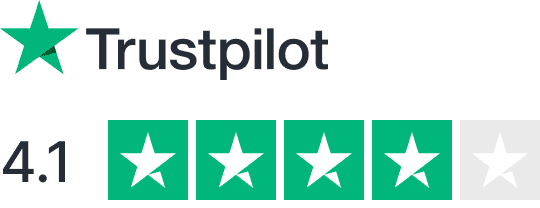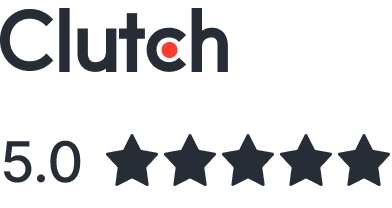Want to scale your team in Latin America? Here’s how businesses are reducing costs by up to 40% while accessing top tech talent in LATAM. With time zone alignment, skilled professionals, and strong industry expertise, LATAM is becoming a top destination for global hiring.
Key Takeaways:
- Top Benefits: Cost savings, real-time collaboration, and a talent pool of over 600 million.
- Industries Hiring: Software development, IT infrastructure, cloud computing, and data analytics.
- 5-Step Framework:
- Map team needs using skills assessments.
- Access talent through local hiring partners.
- Integrate teams with tools and onboarding programs.
- Plan for long-term growth with flexible team structures.
- Track performance with clear metrics and feedback.
Ready to build your LATAM team? Learn how companies like Google and Shopify are succeeding with this structured approach.
Step 1: Map Your Team Requirements
Mapping out your team’s needs starts with a clear understanding of the skills and roles required.
Use a skills matrix to pinpoint gaps in technical expertise, industry knowledge, and interpersonal abilities. Here’s an example to guide your assessment:
| Skill Category | Assessment Areas | Priority Level |
|---|---|---|
| Technical Skills | Programming languages, frameworks, tools | High |
| Domain Knowledge | Industry expertise, market understanding | Medium |
| Soft Skills | Communication, leadership, teamwork | High |
| Language Proficiency | English fluency, technical writing | Medium |
According to data from Near, 70% of developers in LATAM have intermediate to advanced English skills. This makes evaluating language proficiency an important part of the process. Once you’ve identified the gaps, focus on the roles that will have the most impact on your team’s success.
Select Key Roles for Growth
Using your skills assessment as a foundation, prioritize roles that align with your business goals. Cities like Guadalajara and Monterrey are hotspots for talent in areas like software development and cloud computing, making them ideal for sourcing specific expertise.
Research talent pools in these regions and evaluate the return on investment for each role. Companies that combine skill gap analysis with market insights often see better outcomes. For instance, Xivic successfully filled critical positions by aligning their hiring strategy with detailed market data, ensuring they addressed gaps effectively while maintaining top-tier quality.
Step 2: Access LATAM Talent Sources
Latin America is a hub for skilled tech professionals, offering expertise, cultural compatibility, and time zone alignment – key factors for building scalable teams. Countries like Mexico, Brazil, Colombia, and Argentina stand out for their strong technical talent.
| Advantage | Description | Impact |
|---|---|---|
| Technical Expertise | Solid skills in software development, cloud computing, and new tech | Better deliverables and innovative results |
| Project Management | Proficiency in Agile methods and process improvement | Streamlined projects and strong team synergy |
| Innovation Focus | Hands-on experience with new technologies and digital solutions | Improved problem-solving and creative ideas |
| Industry Knowledge | Specialized skills across various tech fields | Greater understanding of business needs |
To make the most of these strengths, consider teaming up with recruitment specialists.
Work with Hiring Partners
Collaborate with hiring firms that know LATAM markets inside out. Look for those offering end-to-end recruitment services. For instance, CareMinds connects you with over 1,000 pre-vetted developers through a network of 100+ independent recruiters. They boast a matching time of just three days and provide:
- Screening for both technical and interpersonal skills
- Evaluations for cultural fit
- Risk-free trial periods
- Continued HR support
- Flexible hiring options
A great example? Parlevel successfully scaled its development team by teaming up with hiring partners, benefiting from seamless integration and cultural alignment services.
sbb-itb-a3fbb4e
Step 3: Set Up Team Integration
Coordinating LATAM teams effectively means addressing time zone differences and bridging cultural gaps. One proven approach is scheduling communication during overlapping work hours for better synchronization.
| Integration Element | Implementation Strategy | Expected Outcome |
|---|---|---|
| Daily Standups | Short video calls during overlapping hours | Better team alignment and faster issue resolution |
| Documentation | Maintain a shared knowledge base in English and Spanish | Easier access to key information |
| Collaboration Tools | Standardize tools like Slack, MS Teams, and Jira | Simplified communication and project tracking |
| Cultural Exchange | Host monthly virtual team-building sessions | Improved cross-cultural understanding |
These steps help establish a strong communication framework. Once this is in place, focus on integrating new hires with a well-structured onboarding program.
Create Onboarding Steps
A solid onboarding process boosts team engagement and productivity. Key elements of an effective plan include:
- Technical Setup and Access: Ensure all tools, permissions, and technical documentation are ready before the new hire starts.
- Cultural Integration Program: Offer initiatives that improve collaboration and help new team members adapt.
- Mentorship Assignment: Pair new hires with experienced team members to ease their transition and help them become productive faster.
Regular check-ins during the early stages of onboarding are essential. Use these to confirm that new hires have the resources they need, including materials in both English and Spanish, and feel supported in their roles.
Step 4: Build Long-term Team Plans
Long-term planning is essential for creating a team that can grow and adapt over time. Research from McKinsey & Company reveals that teams with cultural diversity are 33% more likely to achieve higher profitability. This highlights the importance of careful planning to ensure success.
Using team structures that can adjust to changing needs allows for growth without disrupting ongoing operations. Here are a few examples:
| Structure Type | Benefits | Implementation Strategy |
|---|---|---|
| Pod-based Teams | Independent units that grow as needed | Form cross-functional groups with clear roles |
| Hybrid Staffing | Combines full-time and contract talent | Work with staffing providers for quick scaling |
| Matrix Organization | Shares resources across projects | Use dual reporting lines for better efficiency |
For example, Xivic leveraged flexible teams through TeamStation AI to support multiple product lines. This approach not only saved costs but also improved operational efficiency, showing how adaptable structures can meet diverse project demands.
Planning for flexibility is just the first step. To stay ahead, teams also need to prepare for market changes.
Prepare for Market Changes
As your team grows, understanding and adapting to market trends becomes just as important as structural flexibility. Research from MIT Sloan found that teams using effective digital communication tools are 20% more productive, emphasizing the need for a strong digital foundation.
Here are three strategies to help your team navigate market shifts:
- Resource Planning: Build a steady talent pipeline by forming strong partnerships.
- Skills Development: Invest in ongoing training to drive innovation and open new revenue opportunities.
- Market Monitoring: Stay informed about industry trends and collaborate with local hiring partners who understand regional markets. For instance, Parlevel succeeded in LATAM by forming strategic partnerships that supported team growth while addressing market challenges.
Focusing on steady, sustainable growth rather than quick expansion ensures your team can adapt and thrive over time. Combining proactive planning with efficient integration creates a strong foundation for scalable success in LATAM.
Step 5: Track Team Results
Once you’ve set up solid team structures and long-term plans, the next step is measuring how well those plans are working. Keeping track of performance and making adjustments along the way is key for LATAM teams.
Tracking the right metrics helps you spot growth opportunities and tackle challenges early. A good measurement system should include both numbers and insights from team interactions.
| Metric Category | Key Indicators | How to Track |
|---|---|---|
| Productivity | Project completion rates, code quality, sprint velocity | Weekly performance dashboards |
| Team Integration | Cross-team collaboration, knowledge sharing | Monthly peer reviews |
| Business Impact | Cost efficiency, time-to-market, ROI | Quarterly business reviews |
Pair these metrics with regular feedback sessions to address issues quickly. This approach creates a clear path for improving team performance.
Support Team Development
Using performance data, you can shape strategies that help your team keep growing. Continuous learning is essential for long-term success, and structured programs can improve both retention and results. Here are some ways to help your team reach their full potential:
- Skill Assessment Programs: Regularly evaluate team skills to find gaps and opportunities. This allows you to design training programs that match your team’s needs as they grow.
- Cultural Integration Training: When teams understand cultural differences, communication improves, and integration happens more smoothly. Investing in cultural training can make a big difference.
- Technical Excellence Programs: Keep technical standards high with workshops, peer programming, and support for certifications. Personalized growth paths, like mentorship programs, can also make onboarding easier and boost performance.
Building LATAM Teams
5 Steps Overview
Creating scalable teams in the LATAM region requires thoughtful planning and execution. A five-step framework can guide this process effectively, with each stage building on the last to support steady team growth.
Companies that adopt this structured method while prioritizing diversity often see measurable gains in creativity and output. For instance, diverse leadership teams have been shown to drive up to 45% of revenue from newly launched products and services.
Here’s a quick breakdown of the framework:
- Requirements Mapping: Assess and define the skills your team needs.
- Talent Access: Build hiring strategies through partnerships.
- Team Integration: Promote collaboration across regions.
- Long-term Planning: Use flexible structures to adapt over time.
- Results Tracking: Monitor performance with clear metrics.
These steps highlight the importance of precise planning, targeted hiring, smooth integration, forward-thinking strategies, and consistent performance evaluation – all essential for success in the LATAM market.
Time to Build Your Team
Now that the framework is clear, it’s time to take action. Companies like Google and Microsoft have already tapped into the potential of LATAM development hubs in countries such as Brazil, El Salvador, and Mexico. Their success demonstrates how effective team models can drive growth and innovation.
To get started:
- Set Clear Objectives: Outline what you want your team to achieve.
- Partner Strategically: Work with trusted hiring partners to find top talent.
- Use Integration Tools: Leverage digital tools for smooth collaboration.
Specialized partners can speed up this process. For example, CareMinds connects companies with vetted developers in just three days, offering fast deployment, quality assurance, and ongoing support.
The secret to success lies in balancing flexibility with a structured approach. By adopting collaborative tools and fostering a culture that values diverse ideas, businesses can build teams that fuel innovation and deliver lasting results in the LATAM market.
Start implementing these steps today, and consider working with partners like CareMinds to seamlessly integrate top-tier talent into your team.
















